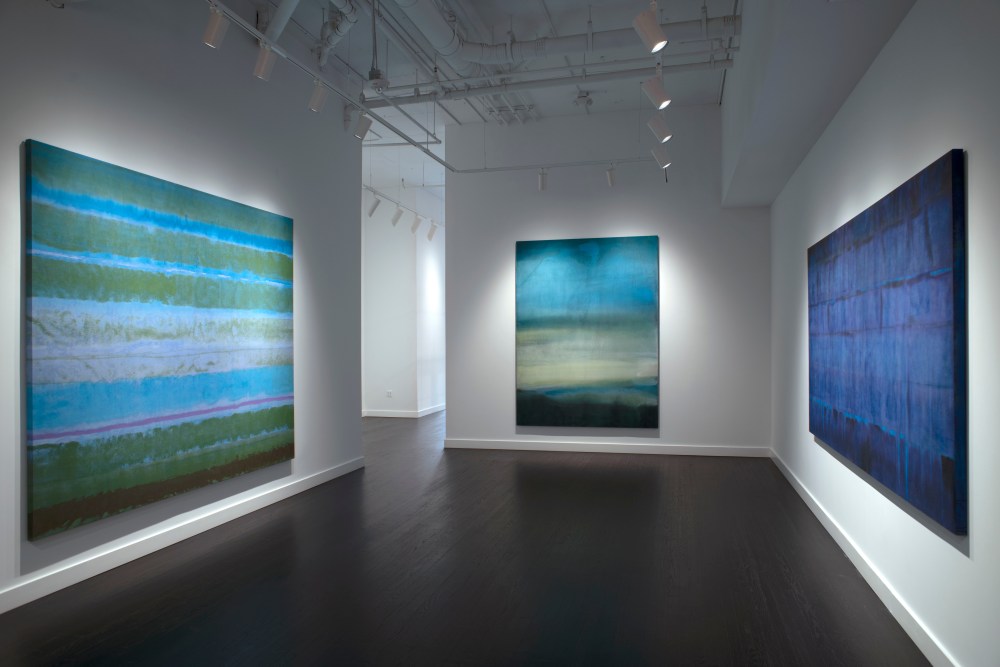
by Phil Hutinet for HillRag
February 13, 2023
In contrast to the exhibition “Willem de Looper: Paintings 1968 – 1972,” presented two years ago at HEMPHILL, “Paintings 1972 – 1975” marks a notable evolution in de Looper’s artistic approach. This transformation sets him apart from his Washington Color School peers, a group largely known for maintaining consistent painting methods throughout their careers.
In 1973, post initial acclaim, de Looper and his wife Frauke embarked on a cross-country journey across the United States. The expansive deserts and towering mountains of the American Southwest profoundly impacted the artist, proving a revelation for him as a DC resident who emigrated from Europe.
Upon returning to DC, de Looper his practice transformed significantly. Confining his color palette, he adopted a new technique—utilizing paint rollers to create horizontal bands of layered colors. This shift marks the inception of his subsequent phase, defined by thematic separations into earth tones, foliage, and sky colors. The division between these bands captures the dramatic essence of nature’s boundaries, ranging from severe to subtly indistinguishable. The larger paintings from 1973 to 1976 mirror the overwhelming scale he experienced encountering with Southwest for the first time.
“Paintings 1972 – 1975,” stands as a distinct phase in the artist’s career or what the HEMPHILL calls “a second act,” affirming the artist’s enduring commitment to innovation and depth.